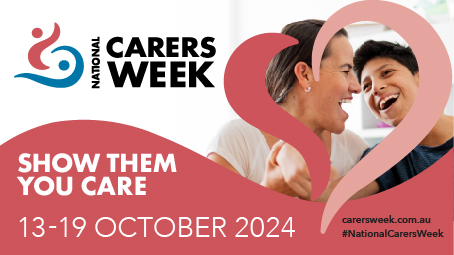
Seven things you need to do to be great at crowdfunding
Crowdfunding has exploded in popularity over the past few years. Today, literally tens of billions of dollars is being ‘crowdfunded’ for everything from business start-up costs to activist campaigns to personal medical expenses.
Despite the high profile of this fundraising approach, it remains very poorly understood and to many people’s surprise the actual success rate of crowdfunding campaigns is fairly poor overall, with very few platforms having more than a 1/3 success rate and many being as low as 13%. Being good at crowdfunding isn’t rocket science, however. You simply need to know how to focus your efforts and understand what’s really going on.
Here are seven things you’ll need to do to be great at crowdfunding:
1. Be clear on your story
The best crowdfunding projects inspire trust in potential supporters by having clear, specific and tangible goals. Before you build your campaign, be sure about what you want to achieve and think about how this can be best communicated both on your campaign page and in your outreach. And be clear on who needs to hear this story – which communities are going to resonate with your story and mission.
2. Focus on outreach
Contrary to popular belief, there is no anonymous ‘crowd’ out there waiting to fund your crowdfunding project. What does this mean? You have to get out there and actually promote your campaign to the tribes who connect with your project’s goals. Coming up with a promotion plan involves identifying who these people are, how you will reach them, what kind of messages they will respond to and the best way to communicate these messages to them. Consider things like email, PR releases, letter drops, offline events, telephone and direct mail etc. Successful crowdfunding takes hustle! It is not a case of simply posting your project and waiting for supporters to find you – it’s that approach that leads to so many people failing. You need to be prepared to work every single day of your campaign to get the word out there. And don’t just limit this promotion to after the campaign has launched. Some of the most effective promotional plans involve generating excitement in the lead up to your campaign launch so that supporters are ready to get behind you from day one!
3. Win their trust
One of the main reasons people won’t support you is they will perceive it as being too risky. It’s your ability to be credible and trustworthy that will overcome this. There are three main types of risk that hold supporters back:
- Idea risk – can this idea work?
- Implementation risk – can this person do it?
- Fundraising risk – will they even raise enough money to try?
The third type of risk comes up particularly for campaigns that choose a ‘keep what you raise’ model, which is why those platforms tend to have very low success rates, usually in the teens. You get to keep what you raise, but the model actually makes it harder to raise in the first place. But even without this holding people back, you’ll need to really make them believe that you and your idea are ready for prime time. The way to do this is to demonstrate the progress you’ve made so far (for instance if it’s an app, you should have designs ready to show off) and your appropriateness for this job (your previous projects or employment, educational qualifications, awards, etc.). One great way to win greater credibility is to have partners backing your campaign – that way their credibility can rub off on you and your idea.
4. Have a video
Apart from meeting someone face-to-face, a campaign video is one of the most effective ways to make a connection with potential supporters. In fact, campaigns with videos raise double the funds of those without! So don’t hide behind your idea or your initiative – you need to step out in front and introduce yourself to us, and video is the best way to do that. Remember that authenticity counts more than production value! Make sure your video shows your passion for the project you are crowdfunding for and why you are the right person to implement it. Here are a few more tips for making your video:
- Videos shouldn’t be more than three minutes long
- Make sure YOU appear in your video
- Offer a clear call to action
- Always include your project short URL in your video (in the description, as a slide or as a link where possible), so that if it’s shared, viewers are able to get to your campaign
5. Offer rewards
Rewards will play a crucial role in your crowdfunding campaign. Good rewards do (at least) one of the following:
- Provide a valuable good or service
- Allow supporters to form a stronger connection with your project
- Show gratitude to your supporters through acknowledgment of their pledge
Everyone has the ability to offer rewards because you can factor this into your fundraising goal and put some effort into being creative about what you offer your supporters. Let’s say you need a minimum of $10,000 to make your project happen. Think about budgeting $1,000 for rewards and offering something your community would value. Set your goal at $12,000 to accommodate this (and postage, fees, etc.) while still leaving you with $10,000 to put towards the project. At the end of the day you’re more likely to raise $12,000 with rewards than $10,000 with no rewards.
If the rewards are well-designed and on-mission (nice t-shirts, water bottles, reusable coffee cups, invitations to an event, a book, etc.) they can help promote your cause as well as your campaign, so it’s a win-win. But if tangible rewards just don’t feel right for your project, that’s fine! You can express your ‘rewards’ in terms of the social outcome created, which is the real reward for most people anyway. So, for example, you might say that the reward for $50 is “one young person able to join our program” and $100 as “two young people able to join our program” and so on. A mix of both approaches is most effective though.
6. Don’t crowdfund for too long
Crowdfunding campaigns occur over a specific time period. Many people think that a longer campaign leads to more money raised, however this is not the case. In fact, the most successful crowdfunding campaigns are usually between 30 to 40 days. Longer campaigns can be extremely repetitive for potential supporters, dilute your message and also kill the excitement generated by your campaign.
7. Remember to follow up
So, you’ve hit your fundraising goal. Now what? Firstly, thank your supporters! Get your rewards out to them quickly, or keep them updated on an estimated time of arrival. Think of every person who pledged to your project as a founder of your project and keep them updated and engaged. If treasured, they will continue to offer you support in terms of promotion, connections, time, financial resources and education. At its heart, crowdfunding isn’t just about raising money, it’s about building a community around you and your idea, and it’s that community that will ultimately carry you forward, long after the funds have been spent.
Tom Dawkins is the co-founder and CEO of StartSomeGood.com, a crowdfunding platform that specialises in helping social good projects raise the funds they need to make a difference, and has the highest project success rate in cause crowdfunding. Find out more at www.startsomegood.com or follow Tom on Twitter at www.twitter.com/tomjd.







